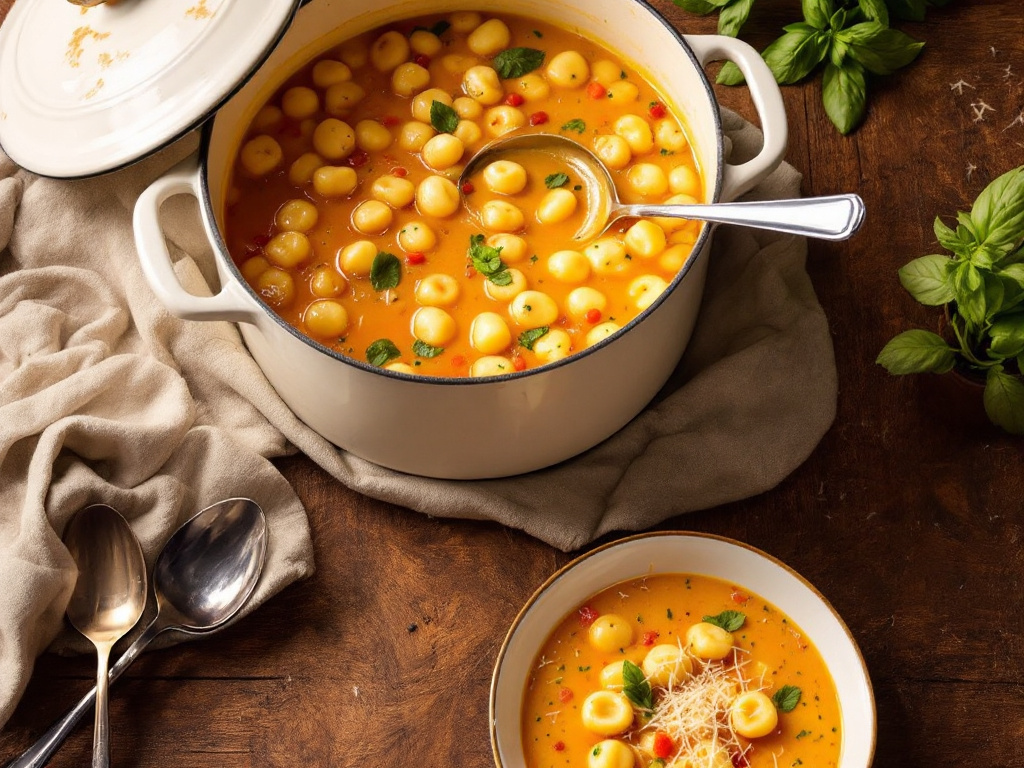Introduction
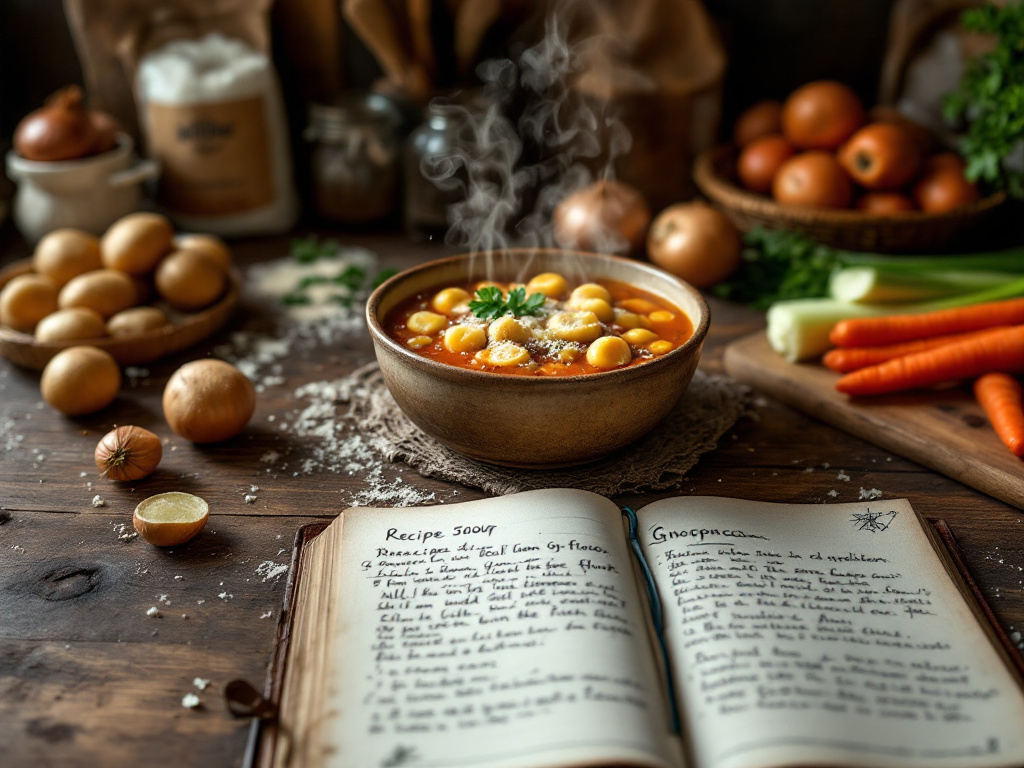
Gnocchi is a beloved Italian dish, cherished for its pillowy texture and comforting taste. Whether homemade or store-bought, gnocchi can elevate any soup recipe, adding a delightful heartiness. However, the question often arises: should you cook gnocchi before adding to soup? This article delves into the nuances of cooking gnocchi for soup, exploring the advantages and disadvantages of pre-cooking gnocchi, and providing expert tips to achieve the perfect texture and flavor.
Understanding Gnocchi and Its Role in Soup
Gnocchi comes in various forms, with potato gnocchi being the most common. Other types include ricotta and semolina gnocchi, each offering a unique texture and flavor profile. Store-bought gnocchi is convenient and typically pre-cooked, while homemade gnocchi offers a fresher taste and customizable ingredients. For a detailed guide on making homemade gnocchi, check out this Gnocchi Soup Recipe Guide.
When preparing gnocchi for soup, it’s essential to consider the type of gnocchi and the desired outcome. For instance, potato gnocchi tends to be denser and may require slightly longer cooking times. On the other hand, ricotta gnocchi is more delicate and can disintegrate if overcooked. For a comprehensive overview of gnocchi types and their characteristics, refer to this Easy Gnocchi Soup Recipe.
Gnocchi is a versatile ingredient that can be incorporated into a variety of dishes, but it truly shines in soups. The soft, pillowy texture of gnocchi complements the hearty broth and tender vegetables commonly found in soups. Whether you’re making a classic chicken gnocchi soup or experimenting with a creamy vegetable gnocchi soup, understanding how to cook gnocchi properly is crucial for achieving the best results.
Preparing Gnocchi for Soup: Key Steps
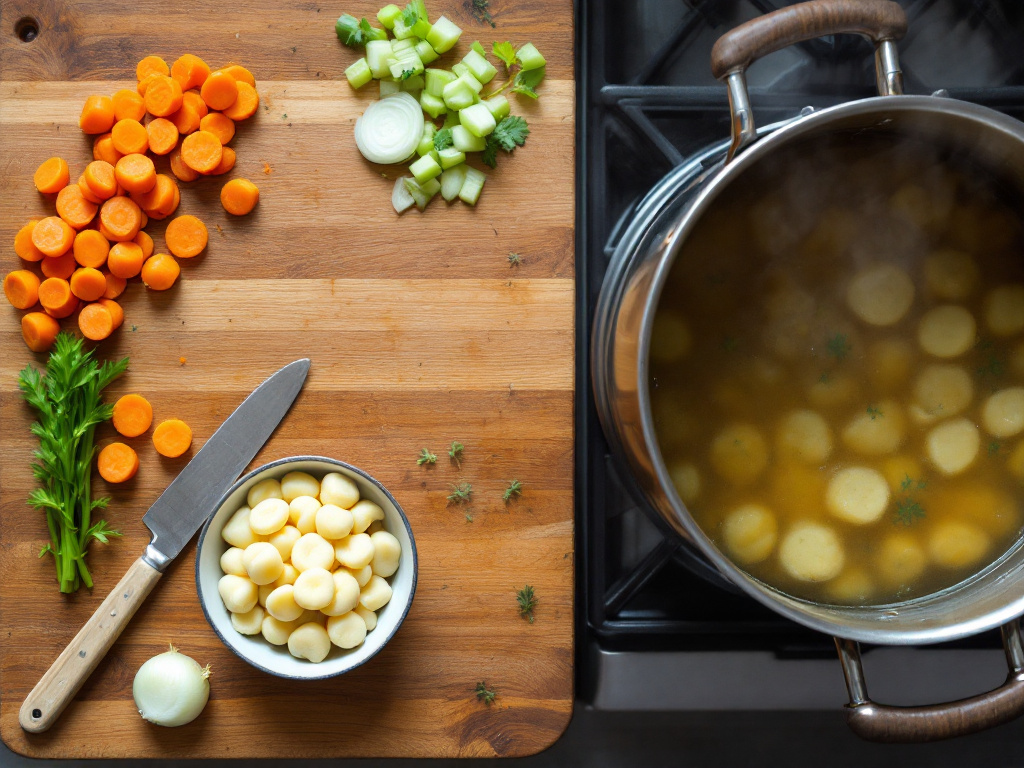
To prepare gnocchi for soup, gather your ingredients, including gnocchi, broth, vegetables, and any desired proteins. If using homemade gnocchi, ensure the dough is well-rested before cooking. For store-bought gnocchi, follow the package instructions for any pre-cooking steps.
-
Ingredients Needed:
- Gnocchi
- Broth (chicken or vegetable)
- Vegetables (carrots, celery, onions)
- Protein (chicken, sausage, or vegetables)
- Seasonings (salt, pepper, herbs)
-
Initial Preparation:
- If using homemade gnocchi, shape the dough into small pillows.
- For store-bought gnocchi, no initial preparation is needed.
Preparing gnocchi for soup involves more than just gathering ingredients; it’s about understanding the role each component plays in the final dish. The broth, for example, provides the foundation of flavor, while the vegetables add texture and nutrients. The protein, whether it’s chicken, sausage, or a plant-based alternative, contributes heartiness and substance to the soup.
When selecting gnocchi, consider the type of soup you’re making. For a hearty, rustic soup, potato gnocchi is an excellent choice due to its dense texture. For a lighter, more delicate soup, ricotta gnocchi may be more suitable. Regardless of the type, ensure your gnocchi is fresh and of high quality to achieve the best results.
Cooking Gnocchi Separately: Pros and Cons
Cooking gnocchi separately before adding it to soup offers several advantages:
-
Clear Broth: Pre-cooking gnocchi in water prevents the soup broth from becoming cloudy due to starch release. This is particularly important if you prefer a clear, visually appealing broth. The starch released from gnocchi can alter the soup’s texture, making it thicker and less transparent.
-
Controlled Texture: Cooking gnocchi separately allows for better control over its texture, ensuring it doesn’t become too soft or mushy in the soup. By boiling the gnocchi in water first, you can achieve a consistent texture that complements the other ingredients in your soup.
-
Method:
- Bring a large pot of salted water to a boil. The water should be generously salted to enhance the gnocchi’s flavor.
- Gently add the gnocchi to the boiling water, ensuring they don’t stick together. Stir occasionally to prevent sticking.
- Cook the gnocchi until they float to the surface, usually 2-3 minutes. This indicates that they are cooked through.
- Using a slotted spoon, carefully remove the gnocchi from the water and drain any excess liquid.
- Add the cooked gnocchi to the soup just before serving to maintain their texture and prevent overcooking.
However, this method may result in a less flavorful gnocchi, as it doesn’t absorb the soup’s flavors during cooking. To mitigate this, consider adding a small amount of the soup broth to the gnocchi after draining them, allowing them to soak up some flavor before being added to the soup.
Cooking Gnocchi Directly in Soup: Enhancing Flavor
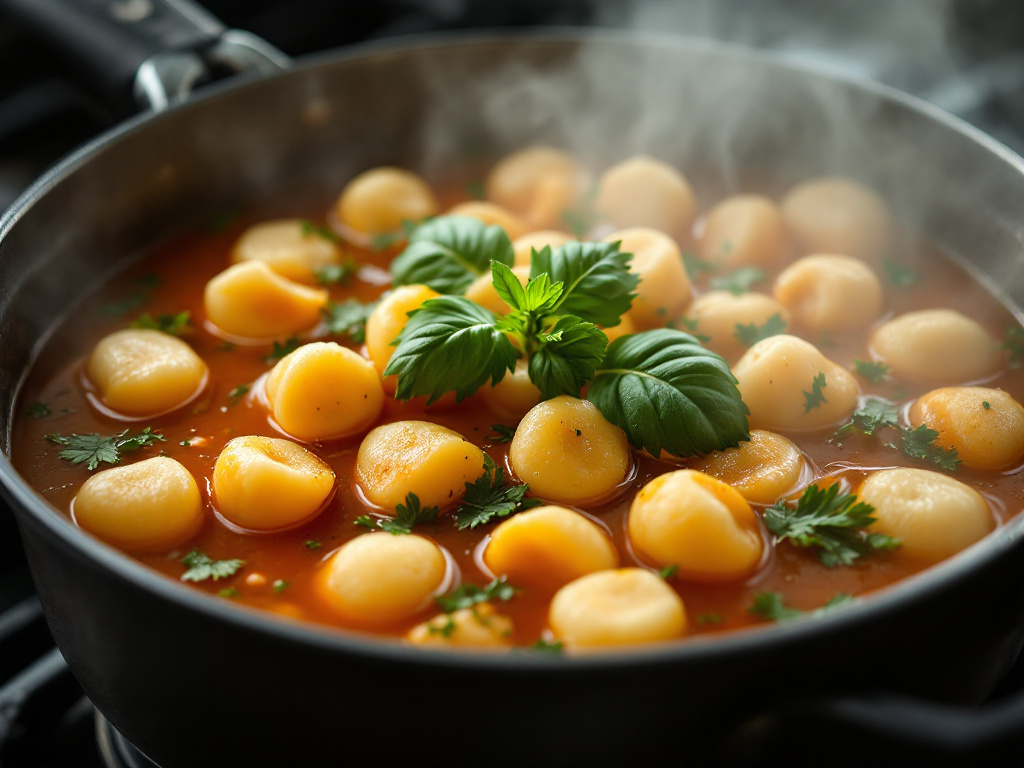
Cooking gnocchi directly in the soup is convenient and enhances the soup’s flavor:
-
Enhanced Flavor: Gnocchi absorbs the soup’s flavors as it cooks, resulting in a more robust taste. By cooking the gnocchi directly in the broth, you allow the flavors to meld together, creating a harmonious and delicious soup.
-
Convenience: This method saves time and reduces the number of pots used. Cooking gnocchi directly in the soup streamlines the cooking process, making it an ideal choice for busy home cooks.
-
Method:
- Bring your soup to a gentle simmer. Ensure the broth is hot but not boiling rapidly to prevent the gnocchi from breaking apart.
- Gently add the gnocchi to the simmering soup, stirring occasionally to prevent them from sticking to the bottom of the pot.
- Cook the gnocchi until they float to the surface, usually 2-3 minutes. This indicates that they are cooked through.
- Once the gnocchi are cooked, reduce the heat and let the soup simmer for an additional 1-2 minutes to allow the flavors to meld.
However, cooking gnocchi directly in the soup can make the broth starchy and cloudy, altering the soup’s texture. To minimize this effect, consider adding the gnocchi towards the end of the cooking process and avoiding excessive stirring, which can release more starch into the broth.
Techniques for Perfect Gnocchi in Soup: Expert Tips
To achieve perfectly cooked gnocchi in soup, follow these techniques:
-
Timing: Add gnocchi to the soup during the last few minutes of cooking to prevent overcooking. Gnocchi cooks quickly, and overcooking can result in a mushy texture. By adding the gnocchi towards the end of the cooking process, you ensure they retain their pillowy texture.
-
Stirring: Stir the soup gently to ensure even cooking and prevent gnocchi from sticking to the pot. Vigorous stirring can cause the gnocchi to break apart or release excess starch, altering the soup’s texture. Use a gentle hand and stir occasionally to maintain the gnocchi’s integrity.
-
Seasoning: Season the soup generously to complement the gnocchi’s mild flavor. Gnocchi has a delicate taste that can be easily overpowered by strong flavors. To enhance the gnocchi’s natural flavor, use a balanced combination of herbs, spices, and aromatics in your soup. Consider using fresh herbs like basil, thyme, or parsley to add a burst of flavor to your soup.
-
Consistency: Maintain a consistent simmer when cooking gnocchi in soup. A gentle simmer ensures even cooking and prevents the gnocchi from breaking apart. Avoid boiling the soup rapidly, as this can cause the gnocchi to disintegrate or become mushy.
Tips from Experts: Avoiding Common Mistakes
Professional chefs recommend the following tips for cooking gnocchi in soup:
-
Avoid Overcooking: Cook gnocchi just until they float to the surface to prevent sogginess. Overcooking gnocchi can result in a mushy, unappetizing texture. To ensure perfectly cooked gnocchi, keep a close eye on them as they cook and remove them from the heat as soon as they float to the surface.
-
Use Fresh Ingredients: Opt for fresh herbs and high-quality broth for the best flavor. Fresh ingredients elevate the taste of your soup, complementing the delicate flavor of the gnocchi. Consider using homemade broth or stock for a richer, more robust flavor.
-
Common Mistakes:
- Adding Gnocchi Too Early: Adding gnocchi too early in the cooking process can result in overcooked, mushy gnocchi. To avoid this, add the gnocchi during the last few minutes of cooking, ensuring they retain their pillowy texture.
- Overstirring the Soup: Vigorous stirring can cause the gnocchi to break apart or release excess starch, altering the soup’s texture. To maintain the gnocchi’s integrity, stir the soup gently and occasionally.
- Using Too Much Flour: When making homemade gnocchi, using too much flour can result in dense, heavy gnocchi. To achieve a light, pillowy texture, use just enough flour to bind the dough without making it tough.
-
Experiment with Flavors: Don’t be afraid to experiment with different flavors and ingredients in your gnocchi soup. Try adding various vegetables, proteins, and seasonings to create unique and delicious soup combinations. Consider using ingredients like spinach, kale, or butternut squash to add nutrients and depth of flavor to your soup.
Storing and Reheating Gnocchi Soup: Maintaining Quality
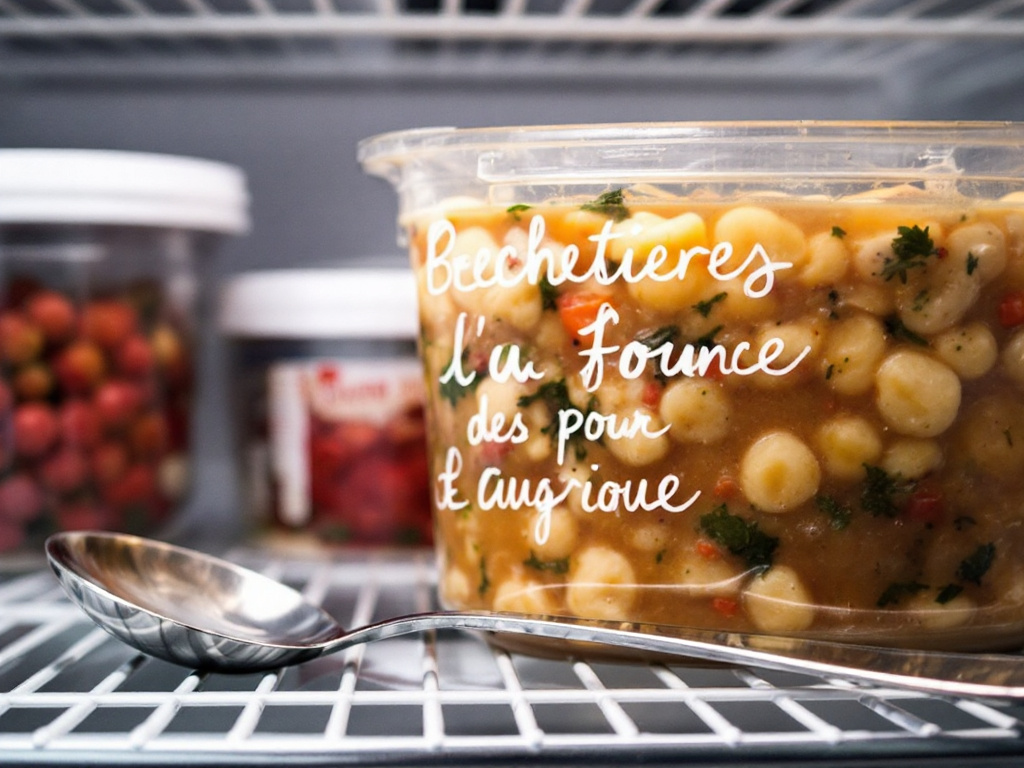
To store gnocchi soup, let it cool to room temperature, then refrigerate in an airtight container for up to four days. To reheat, warm the soup gently on the stove, adding a splash of water or broth to maintain consistency. Avoid reheating gnocchi soup multiple times, as this can degrade the gnocchi’s texture.
When storing gnocchi soup, it’s essential to consider the texture and quality of the gnocchi. Over time, gnocchi can absorb liquid from the soup, becoming soft and mushy. To minimize this effect, store the gnocchi separately from the soup and combine them just before reheating. This helps maintain the gnocchi’s texture and prevents them from becoming soggy.
To reheat gnocchi soup, follow these steps:
- Transfer the desired amount of soup to a pot and place it over medium heat.
- Gently warm the soup, stirring occasionally to prevent scorching.
- If the soup has thickened during storage, add a splash of water or broth to achieve the desired consistency.
- Once the soup is heated through, add the cooked gnocchi and simmer for an additional 1-2 minutes to warm them through.
- Serve the reheated soup immediately to enjoy the best texture and flavor.
FAQs: Addressing Common Questions
-
Should I boil gnocchi before adding to soup?
- Pre-cooking gnocchi maintains a clear broth but may result in less flavorful gnocchi. Cooking directly in the soup enhances flavor but can make the broth starchy. The choice between pre-cooking and direct cooking depends on your personal preference and the desired outcome for your soup.
-
How long does it take to cook gnocchi in soup?
- Gnocchi typically cooks in 2-3 minutes, floating to the surface when done. However, cooking times may vary depending on the size and type of gnocchi used. To ensure perfectly cooked gnocchi, keep a close eye on them as they cook and remove them from the heat as soon as they float to the surface.
-
Can I use frozen gnocchi in soup?
- Yes, frozen gnocchi can be added directly to the soup, cooking until they float to the surface. Frozen gnocchi is a convenient option that can save time and effort in the kitchen. To use frozen gnocchi in soup, follow the same cooking method as fresh gnocchi, adding them to the simmering soup and cooking until they float to the surface.
-
How do I prevent gnocchi from becoming soggy?
- To prevent gnocchi from becoming soggy, avoid overcooking and add them to the soup just before serving. Additionally, consider cooking the gnocchi separately and adding them to the soup at the last minute to maintain their texture. Storing gnocchi separately from the soup can also help prevent sogginess during reheating.
-
What are some good gnocchi soup recipes?
- Popular gnocchi soup recipes include Chicken Gnocchi Soup and Creamy Gnocchi Soup with vegetables. These recipes showcase the versatility of gnocchi in soup, combining hearty broths, tender vegetables, and flavorful proteins to create delicious and comforting meals.
Conclusion: Mastering Gnocchi in Soup
In conclusion, whether to cook gnocchi before adding it to soup depends on personal preference and the desired outcome. Pre-cooking gnocchi maintains a clear broth, while cooking directly in the soup enhances flavor. By following the techniques and tips outlined in this article, you can achieve perfectly cooked gnocchi in your soup every time.
This article provides a comprehensive guide to cooking gnocchi for soup, ensuring a delightful culinary experience. From understanding the different types of gnocchi to mastering cooking techniques, this guide equips you with the knowledge and skills to create delicious gnocchi soups that impress family and friends. So, the next time you’re craving a comforting bowl of gnocchi soup, remember these tips and enjoy the perfect blend of flavors and textures in every bite.
